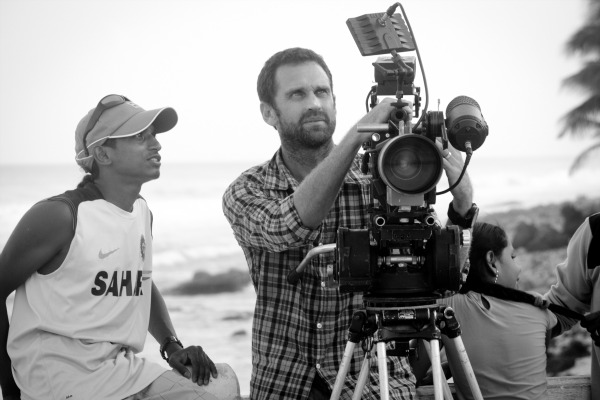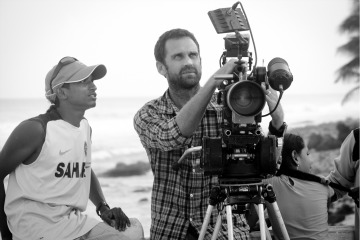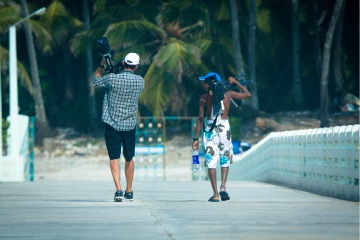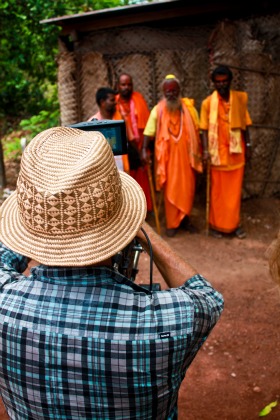
Setting the right angle. All images: Dustin Ellison
This past December, while watching the festivities unfold at Surfer Magazine’s Surfer Poll Awards, I watched the footage flickering on the media room’s television. We were a few awards deep, the nominees for Best Cinematography getting their 15 seconds of glory, when I thought to myself: I’ve seen that break before.



